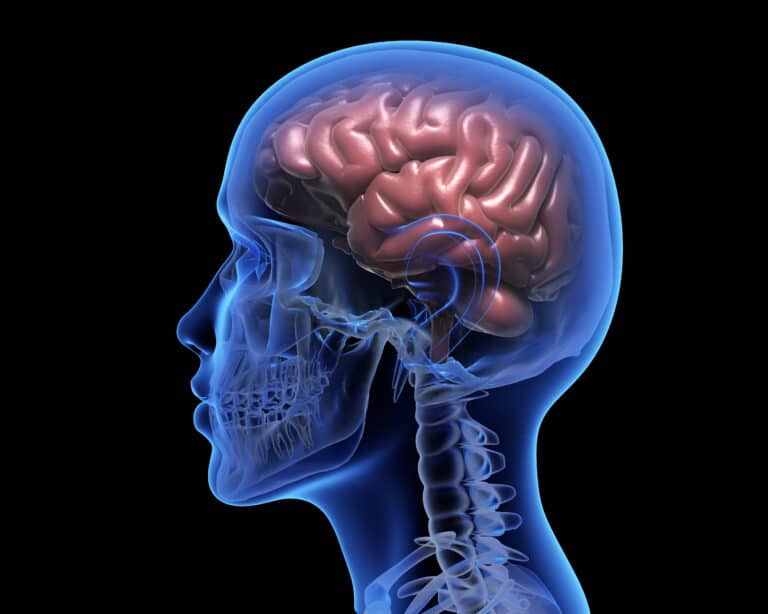The interactions of different drugs can sometimes lead to complex and potentially hazardous outcomes. This is particularly true in the case of combining Xanax (Alprazolam) and Gabapentin, two prevalent prescriptions in modern medicine. This article aims to delve into the intricacies of this combination, highlighting the reasons for caution and the importance of informed healthcare decisions.
Understanding Xanax
Before delving into the combined use of Xanax and Gabapentin, it’s crucial to understand Xanax in isolation. Alprazolam, known commonly as Xanax, is a widely used medication in the treatment of anxiety and panic disorders. Its popularity stems from its efficacy in calming the nervous system, but this comes with a spectrum of side effects that users should be aware of.
Xanax is classified under benzodiazepines, a group of drugs known for their tranquilizing effect. It works by enhancing the activity of certain neurotransmitters in the brain, primarily gamma-aminobutyric acid (GABA), which plays a key role in inducing a calming effect on the nervous system. This makes Xanax a potent drug for alleviating symptoms of anxiety and panic.
Common Side Effects of Xanax
While Xanax is effective in managing anxiety-related conditions, it does have a range of potential side effects. These include, but are not limited to:
- Drowsiness and Fatigue: A common side effect, Xanax can lead to feelings of tiredness and a general lack of energy.
- Dizziness and Lightheadedness: Users might experience bouts of dizziness, affecting their balance and coordination.
- Cognitive Impairment: Xanax can impact mental alertness and clarity, causing difficulties in concentration and memory.
- Mood Swings: Some individuals might experience emotional and mood changes, including feelings of depression.
- Physical Dependence: With prolonged use, there is a risk of developing a dependence on Xanax, leading to withdrawal symptoms if the medication is abruptly discontinued.
Risks of Long-Term Xanax Use
Long-term use of Xanax is generally not recommended due to the risk of dependence and the potential for abuse. Over time, the body can build a tolerance to the drug, requiring higher doses to achieve the same effect, which can lead to addiction. Furthermore, long-term use is associated with more severe withdrawal symptoms and potential rebound anxiety.
Understanding the nature and side effects of Xanax is crucial, especially when considering its use in conjunction with other medications like Gabapentin. Awareness of these factors enables individuals and healthcare providers to make more informed decisions regarding the management of anxiety and related conditions.
Understanding Gabapentin
In the context of discussing the combination of Xanax and Gabapentin, it’s equally important to understand Gabapentin on its own. This medication plays a significant role in treating certain medical conditions, but like all drugs, it comes with its own set of potential side effects.
Gabapentin, often known by its brand name Neurontin, is primarily classified as an anticonvulsant or antiepileptic drug. However, it’s also widely used to relieve neuropathic pain – pain caused by damaged nerves. This makes it a versatile medication for the treatment of various neurological conditions.
Gabapentin works by affecting the electrical activity in the brain and the activity of neurotransmitters, which are chemicals that nerves use to communicate with each other. This action helps to reduce seizure activity and manage neuropathic pain.
Common Side Effects of Gabapentin
While Gabapentin is effective for its intended uses, users may experience several side effects, including:
- Drowsiness and Dizziness: These are among the most common side effects, potentially affecting the ability to perform tasks that require mental alertness.
- Swelling in Extremities: Some individuals might notice swelling in the feet, hands, arms, or legs.
- Difficulty with Coordination: This can include problems with balance and muscle coordination.
- Brain Fog: Users may experience cognitive challenges, such as difficulty concentrating or confusion.
- Gastrointestinal Issues: Symptoms like nausea, vomiting, and stomach pain can occur.
Risks with Long-Term Use or Misuse of Gabapentin
Gabapentin, especially when misused or taken in higher doses than prescribed, can lead to more serious side effects and complications. These include an increased risk of suicidal thoughts and behavior, severe respiratory depression, and allergic reactions. It is also important to note that abrupt discontinuation of the drug can lead to withdrawal symptoms.
Understanding Gabapentin’s role, how it works, and its side effects is crucial, especially when considering its use alongside other medications like Xanax. This knowledge helps in making informed decisions and discussing treatment options with healthcare providers, ensuring safe and effective use of the medication.
The Risks of Mixing Xanax and Gabapentin
When these Xanax and Gabapentin interact, several risks emerge:
Enhanced Sedation and Impaired Motor Skills
The combination of Xanax and Gabapentin can lead to increased dizziness, drowsiness, and cognitive confusion. These effects are particularly pronounced in elderly patients, impacting their thinking, judgment, and motor coordination. Such impairments are risky, especially when it comes to activities requiring mental sharpness, like driving or operating machinery.
Respiratory Risks
Both medications, individually, have the potential to cause respiratory depression. When combined, this risk is magnified, potentially leading to severe breathing difficulties. This poses a significant threat, especially for individuals with underlying respiratory issues.
Cognitive and Memory Challenges
Gabapentin is known to cause brain fog, and when coupled with Xanax, it can result in heightened cognitive impairment and memory challenges. Users may struggle with concentration, experience confusion, and memory lapses, significantly affecting daily life and functioning.
Increased Overdose Potential
The combination of Xanax and Gabapentin elevates the risk of accidental overdose. The distinct mechanisms of action of these drugs can lead to unpredictable bodily reactions, with symptoms ranging from extreme sedation to respiratory distress, and in severe cases, can be fatal.
The Imperative of Professional Medical Advice
If you are prescribed both Xanax and Gabapentin, it’s critical to maintain open communication with your healthcare provider. Detailing all medications, including over-the-counter drugs and supplements, is crucial for safe usage. Healthcare professionals can tailor advice to your specific medical history and conditions, ensuring the safe application of these drugs.
Prescription Drug Addiction Treatment
Substance use disorders, particularly those involving prescription medications like Xanax, require careful and professional management. Understanding the treatment options and the critical role of medically supervised detoxification is vital for those struggling with these challenges.
Prescription drugs, while beneficial when used correctly, can pose significant risks when misused. Substances like Xanax can lead to physical dependence and addiction, making it challenging to cease usage without professional help. Treatment for these disorders often involves a multifaceted approach, including detoxification, therapy, and ongoing support.
The Role of Medically Supervised Detox
Detoxification, or detox, is the first step in the journey towards recovery. It involves the body clearing itself of drugs, and it can be a challenging phase, especially with substances like Xanax, which can have severe withdrawal symptoms. Medically supervised detox is crucial for several reasons:
- Safety: Withdrawal from certain drugs can be dangerous. Medical supervision ensures the safety of the individual, as healthcare professionals can monitor and manage any complications that arise.
- Comfort: Medications and medical care can help alleviate withdrawal symptoms, making the detox process more comfortable and bearable.
- Support and Guidance: Along with medical care, emotional and psychological support is provided, helping individuals understand and navigate the process of recovery.
Comprehensive Treatment Approach
After detox, it’s important to engage in a comprehensive treatment program. This often includes:
- Therapy and Counseling: Individual and group therapy can help address the root causes of addiction, offering strategies for coping and relapse prevention.
- Medication-Assisted Treatment (MAT): In some cases, medications are used to help reduce cravings and manage withdrawal symptoms.
- Support Groups: Joining support groups can provide a sense of community and shared experiences, aiding in long-term recovery.
The Importance of Personalized Care
Each individual’s journey with substance use disorders is unique, requiring personalized treatment plans. This should be tailored to the individual’s specific needs, taking into account their medical history, the substance used, and any co-occurring mental health conditions.
The path to recovery from substance use disorders, especially those involving prescription drugs like Xanax, is challenging but achievable with the right support and resources. Medically supervised detox is a critical first step, ensuring safety and setting the foundation for comprehensive treatment and long-term recovery. It’s essential for individuals to seek professional help and support to navigate this journey effectively.
Help is Available at Southern California Sunrise
While Xanax and Gabapentin are effective in their respective medical roles, their combination can pose significant risks. It’s crucial for patients and healthcare providers to be well-informed about these risks to ensure safe usage. If you or a loved one are prescribed these medications, following medical advice closely is important and being aware of the potential side effects and interactions.
If you or someone you know is struggling with prescription drug addiction, remember that help is available and recovery is possible. The Southern California Sunrise Recovery Center, located in the heart of Orange County, California, offers a compassionate and supportive environment for those seeking to overcome addiction. Our residential addiction treatment programs, coupled with medically supervised detoxification from drugs and alcohol, provide a comprehensive approach to recovery.
Taking the first step towards healing can be challenging, but reaching out for help is a crucial part of the journey. The Southern California Sunrise Recovery Center is equipped with the resources and expertise to support you or your loved one through every step of the recovery process. Don’t hesitate to contact us for assistance and begin the path toward a healthier, drug-free life.
Do you think you may be addicted to prescription medication? Take our Prescription medication Addiction Quiz.
References
- Alprazolam: MedlinePlus drug information. (n.d.). https://medlineplus.gov/druginfo/meds/a684001.html
- MRPharmS, H. M. B. (2023, August 7). Xanax (alprazolam). https://www.medicalnewstoday.com/articles/drugs-xanax
- Johnson, B., & Streltzer, J. (2013, August 15). Risks Associated with Long-Term Benzodiazepine Use. AAFP. https://www.aafp.org/pubs/afp/issues/2013/0815/p224.html
- Gabapentin: MedlinePlus drug information. (n.d.-b). https://medlineplus.gov/druginfo/meds/a694007.html
- United Kingdom National Health Service. (2023a, July 10). Side effects of gabapentin. nhs.uk. https://www.nhs.uk/medicines/gabapentin/side-effects-of-gabapentin/
- Lennox, R., & Mangin, D. (2019). Gabapentin misuse. Canadian Medical Association Journal, 191(2), E47. https://doi.org/10.1503/cmaj.180599
- Gabapentin and xanax interactions Checker. (n.d.). Drugs.com. https://www.drugs.com/drug-interactions/gabapentin-with-xanax-1147-0-133-54.html
- Fleet, J. L., Dixon, S. N., Kuwornu, P., Dev, V., Montero‐Odasso, M., Burneo, J. G., & Garg, A. X. (2018). Gabapentin dose and the 30-day risk of altered mental status in older adults: A retrospective population-based study. PLOS ONE, 13(3), e0193134. https://doi.org/10.1371/journal.pone.0193134
- Olopoenia, A., Camelo-Castillo, W., Qato, D. M., Adekoya, A., Palumbo, F., Sera, L., & Simoni, J. M. (2022). Adverse outcomes associated with concurrent gabapentin, opioid, and benzodiazepine utilization: A nested case-control study. The Lancet Regional Health – Americas, 13, 100302. https://doi.org/10.1016/j.lana.2022.100302
- What is a substance use disorder? (n.d.). https://www.psychiatry.org/patients-families/addiction-substance-use-disorders/what-is-a-substance-use-disorder
- Ait-Daoud, N., Hamby, A. S., Sharma, S., & Blevins, D. (2018). A review of alprazolam use, misuse, and withdrawal. Journal of Addiction Medicine, 12(1), 4–10. https://doi.org/10.1097/adm.0000000000000350
- Pétursson, H. (1994). The benzodiazepine withdrawal syndrome. Addiction, 89(11), 1455–1459. https://doi.org/10.1111/j.1360-0443.1994.tb03743.x
FAQs About Xanax and Gabapentin
What are the main risks of combining Xanax and Gabapentin?
The main risks include enhanced sedation and drowsiness, increased risk of respiratory depression, cognitive impairment and memory problems, and a higher risk of overdose.
Can I drive or operate heavy machinery if I'm taking both Xanax and Gabapentin?
It is advised to avoid driving or operating heavy machinery when taking these medications together, as they can significantly impair your ability to concentrate, make judgments, and coordinate movements.
How does Xanax affect the brain?
Xanax works by enhancing the effects of GABA, a neurotransmitter in the brain that has a calming effect. This action helps reduce anxiety and panic symptoms.
What are the common side effects of Gabapentin?
Common side effects of Gabapentin include drowsiness, dizziness, swelling in extremities, difficulty with coordination, and gastrointestinal issues.
Is it safe to drink alcohol while taking these medications?
No, it is not safe. Alcohol can exacerbate the side effects of both Xanax and Gabapentin, particularly the risks of sedation, dizziness, and respiratory depression.
What should I do if I am prescribed both Xanax and Gabapentin?
Consult your healthcare provider for personalized advice. It’s important to discuss all medications you’re taking, including over-the-counter drugs and supplements, to safely manage the combination.
Are there long-term risks associated with taking Xanax?
Yes, long-term use of Xanax can lead to physical dependence, tolerance, addiction, and severe withdrawal symptoms. It’s generally recommended for short-term use.
Can Gabapentin cause cognitive problems?
Yes, one of the side effects of Gabapentin is brain fog, which can include difficulty concentrating, confusion, and memory issues.
What is the importance of medically supervised detox for substance use disorders?
Medically supervised detox is crucial for safety, as it helps manage withdrawal symptoms and complications under professional care. It also provides necessary support and guidance during the detox process.
Can I stop taking Xanax or Gabapentin abruptly if I experience side effects?
Abruptly stopping these medications is not recommended due to the risk of withdrawal symptoms. Always consult with a healthcare provider before making changes to your medication regimen.






